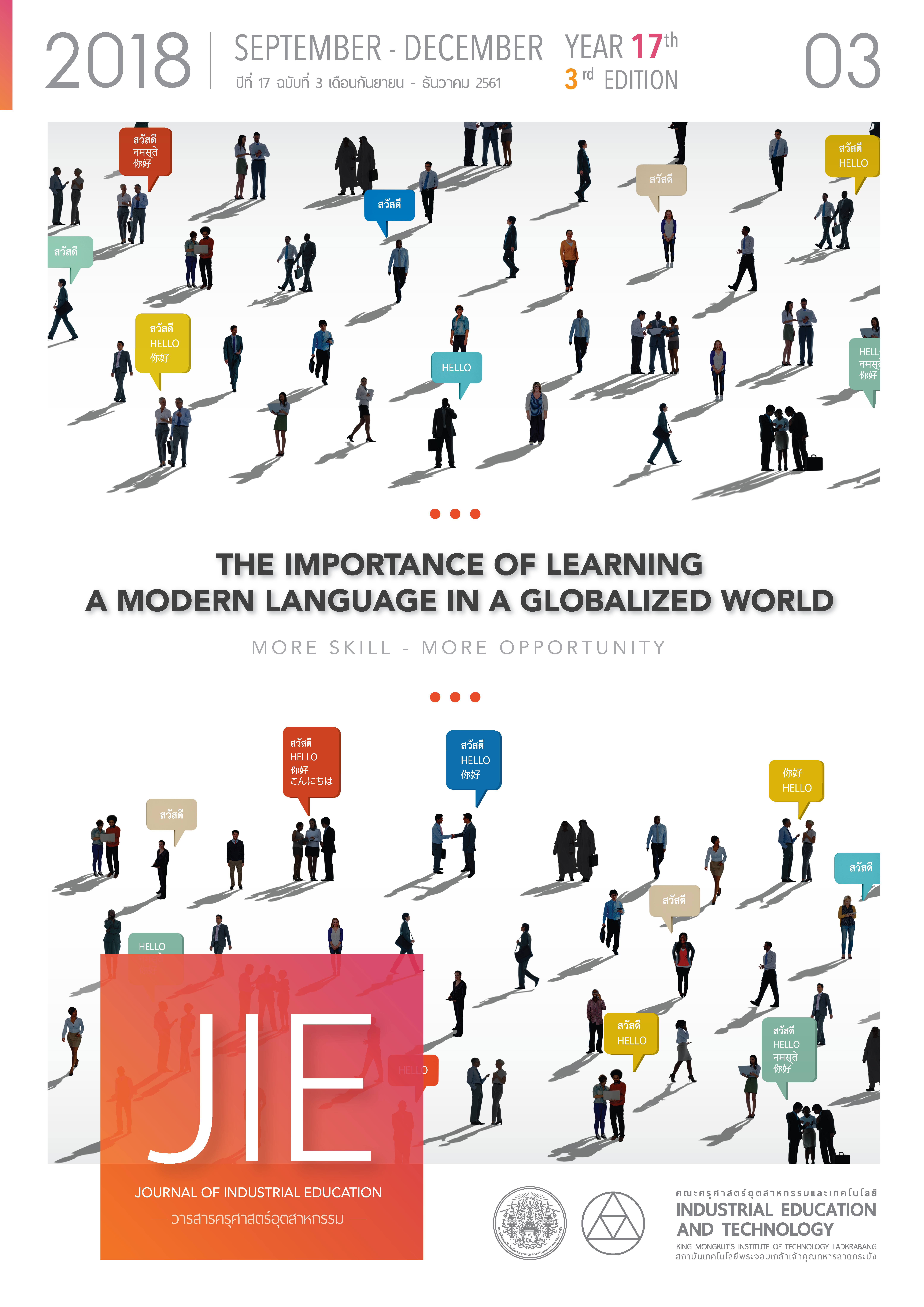THE ROLE OF THAI SCHOOL DIRECTORS AS 21ST CENTURY INSTRUCTIONAL LEADERS
Keywords:
Instructional leader, IL, 21st Century Instructional Leader Roles, Thai School DirectorsAbstract
This qualitative study was undertaken to determine whether, and to what extent, Thai school directors regarded their roles to be 21st century instructional leaders (ILs). The sample was selected using purposive sampling and comprised six primary school directors from a population of 37 schools in Bangkok metropolitan area. The participants were asked, by semi-structured interview questions, about their performance as ILs within eight dimensions. Content analysis was applied, and it was found that most of the key informants performed their roles as the 21st ILs at the low level. Only one dimension reached 50 %, namely, the dimension of curriculum. Performance in the remaining seven dimensions was less than 50%. These dimensions included assessment, instruction, educational use of technology, professional culture and climate, professional development, supervision, and school improvement. Interesting points are discussed why their performance in the role of IL for 21st century classrooms was quite low.
References
[2] Hallinger, P. and Huber, S. 2012. School leadership that makes a difference: international perspectives, School Effectiveness and School Improvement, [Electronic version]. Journal of School Effectiveness and School Improvement. 23:4, 359-367, Retrieved March 20, 2016, from DOI: 10.1080/09243453.2012.681508.
[3] Darnell, B. 2010. The 21st Century Instructional Leader. ASCD E-Book, Alexandria, VA.
[4] Robinson, V. M. J., Lloyd, C. A., and Rowe, K. J. 2008. The Impact of Leadership on Student Outcomes: An Analysis of the Differential Effects of Leadership Types, [Electronic version]. Educational Administration Quarterly, 44, 635-674. Retrieved March 20, 2016, from https://doi.org/10.1177/0013161X08321509
[5] Loeb, S., Kalogrides, D., and Horng, E. 2010. Principal preferences and the uneven distribution of principals across schools [Electronic version]. Educational Evaluation and Policy Analysis. Retrieved March 20, 2016, from http://journals.sagepub.com/doi/10.3102/0162373710369833
[6] Eisner, E. W. (2002). The Arts and the Creation of Mind. New Haven, CT: Yale University Press.
[7] Hallinger, P. and Heck, R. (2010), “Leadership for learning: Does collaborative leadership make a difference in school improvement?” [Electronic version]. Educational Management Administration and Leadership, Vol. 38 No. 6, pp. 654 -678. Retrieved March 20, 2016,from http://journals.sagepub.com/doi/10.1177/1741143210379060
[8] Leithwood, K., Louis, K.S., Anderson, S. and Wahlsttom, K. 2004. Review of Research: How Leadership Influences Student Learning. [Electronic version].Retrieved March 25, 2016,from https://www.wallacefoundation.org/knowledge-center/Documents/How-Leadership-Influences-Student-Learning.pdf
[9] Hallinger, P., Taraseina, P. and Miller, J. 1994. Assessing the Instructional Leadership of Secondary School Principals in Thailand, School. [Electronic version]. Journal of School Effectiveness and School Improvement. 5(4), p. 321 – 348. Retrieved March 20, 2016,from https://www.researchgate.net/publication/44818839_Assessing_the_Instructional_Leadership_of_Secondary_School_Principals_in_Thailand
[10] Hallinger, P. 2004. Meeting the Challenges of Cultural Leadership: The Changing Roles of Principals in Thailand. [Electronic version]. Discourse : Studies in the Cultural Politics of Education. 25(1) p. 61-73. Retrieved March 29, 2016, from https://myvpn.kmitl.ac.th/webproxy/2066/122188923/5/http/.PmK7K.NmOiTi4nK80gL2A/ehost/pdfviewer/0-4+pdfviewer?vid=6&sid=d16117c2-c29a-4691-b316-a05909c0650a%40
[11] Hallinger, P. and Lee M. S. 2014. Mapping Instructional Leadership in Thailand: Has Education Reform Impacted Principal Practice? [Electronic version]. Educational Management Administration & Leadership. 42(1) p. 6-29 Retrieved March 20, 2016,from https://myvpn.kmitl.ac.th/webproxy/2066/122188923/5
[12] Lu, J. F., Hallinger, P., and Showanasai, P. 2014. Evaluating the instructional effectiveness of simulation-based learning in management education in Southeast Asia. [Electronic version]. Journal of Management Development. 33(3), 218-244. Retrieved March 20, 2016,from https://pdfs.semanticscholar.org/1027/bbb23f84ca76b
[13] Lincoln, Y. S., and Guba, E. G. 1985. Naturalistic inquiry. Newbury Park, CA: Sage Publications.
[14] OECD/UNESCO. 2016. Education in Thailand: An OECD-UNESCO Perspective, [Electronic version]. Reviews of National Policies for Education, OECD Publishing, Paris. Retrieved June 28, 2017, from http://unesdoc.unesco.org/images/0024/002457/245735e.pdf
Downloads
Published
How to Cite
Issue
Section
License
"The opinions and contents including the words in papers are responsibility by the authors."
"ข้อคิดเห็น เนื้อหา รวมทั้งการใช้ภาษาในบทความถือเป็นความรับผิดชอบของผู้เขียน"



